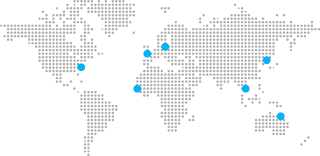
Industrial ro plant is a water purification technique that is employed globally in a variety of commercial settings. Early in 1950, Jean-Antoine Nollet made the discovery of the reverse osmosis phenomena. However, this method of water filtration was first developed in 1950 at the University of California, Los Angeles. In the US, 15,200 water distillation facilities were using this method to purify water as of 2001.
Reverse osmosis technology has gained popularity for home and commercial water filtration ever since it was first commercialized. The largest difficulty in reverse osmosis industrial applications is removing dissolved pollutants from the water. Reverse osmosis (RO) systems are the greatest option for commercial and industrial water since they can remove chemical contaminants as well as microbiological or biological contamination.
Although Reverse osmosis system is considered to be sufficient phenomenon for water purification but there is always a chance for betterment. Let’s try to know the latest technology employed by industrial RO plant:
What lead to improvision of technology in industrial RO systems:
Both reverse osmosis (RO) and nanofiltration (NF) technologies are distinctive in that they create two effluent streams, a reduced TDS (total dissolved solids) permeate and a higher TDS concentrate, in contrast to dead-head filtration, which has a single flow in and out. While the majority of RO and NF applications work to produce water with a certain quality in the permeate stream, some specialised businesses rely on membranes to separate valuable components from concentrate streams. Whichever procedure is used, there will always be some amount of water that needs to be disposed of or handled in a way that might be expensive or subject to strict regulations.
What to deal with the concentrate water the system produces is one issue that all RO and NF operators face. The reject stream is frequently thought of as an expensive trash that needs to be disposed of in some way. Returning it to a surface water with a big enough mixing zone is the cheapest alternative. Some facilities have the luxury of being able to obtain permits to discharge their effluent into rivers or lakes further downstream; however, these permits are becoming more difficult to renew as regulatory bodies enforce more stringent guidelines regarding the effects of salinity on indigenous lifeforms further downstream. Many operators find it difficult to simply return the concentrate since it has greater TDS levels than the feed and could have a different pH value.
Recent technologies to address the problems:
It has been extensively researched how to treat RO concentrate using electrodialysis reversal (EDR) devices in conjunction with gypsum precipitation to reach very high recovery rates. Since it gives power plants and paper mills the option of treating or recycling waste streams inside the facility and effectively removes the regulatory and financial challenges associated with offsite liquid discharge, the forward-thinking concept of zero liquid discharge (ZLD) has also been around for a while. Power plants and paper mills have been particularly interested in ZLD.

Recently, as facilities put in the tools required to achieve this aim, the same ZLD goals have been applied to RO systems. When one membrane plant learned that their surface water discharge permit would not be renewed, they were compelled to evaluate ZLD. They used a ZLD method that combined multiple technologies for them, including sludge dewatering, ion precipitation, and ultrafiltration. The recovered water was then combined with their industrial ro plant permeate. The lowered concentrate volume was substantially smaller than the initial 1.2 MGD that had previously been dumped into a canal, but the ensuing solid trash still needed to be disposed of.
As with any plan to replace or expand capital equipment, the up-front and continuing expenses will affect the breadth of investment, but it’s good to know there are workable alternatives. Regulatory and environmental issues may also drive a specific way. It is possible for discharge permit changes to essentially mandate that a site investigate new water treatment options or improvements. Since getting close to zero might be difficult, there are instances when it is simpler to balance the benefits of an action with their costs. Minimal liquid discharge (MLD), a new nomenclature that is starting to gain popularity in the industry, is emerging as a viable alternative to zero discharge. MLD takes into account tested technology, the capital and ongoing expenses of adopting better recovery rates.
The wastewater, biosolid, and reject process streams that were formerly perceived as waste streams to be disposed of at a cost are now recognised as a nutrient source or a concentrated sidestream that may potentially create income. Heat exchangers are being used by municipalities to discover creative applications for the heat extracted from wastewater streams. It is possible to employ recycled nitrogen and phosphorus from wastewaters as fertilisers, and treated biosolids are being investigated for use as landscape compost. A company is currently evaluating RO to recover salts from concentrate in order to produce a product for resale, and the segregation of urine for nitrogen recovery is under investigation.
Conclusion:
Although there are now many creative choices for the reuse and disposal of RO and NF concentrate waters, industry competitiveness and governmental restrictions will continue to spur forward-thinking ideas that will eventually benefit all of us.
For any other support, inquiries, or product purchases, call on +91-9650608473 or email at enquiry@netsolwater.com

